Do you blast down trails but also go on self-supported bikepacking trips? How can you combine two types of riding that seemingly oppose each other and do both without one side outweighing the other? My Nordest Britango build is an attempt to do just that, plus of course a bit of gratuitous bling and some interesting details.
Here you’ll find an overview of the editor’s dream bikes.

Anyone who’s into bikepacking – click here for our detailed Bikepacking 101 – eventually comes to the point where they want to take their jumble of proven components spread across their personal bike(packing) fleet and combine them into a complete and coherent dream bike. After riding through the countryside on everything from fat bikes, monster crossers and gravel bikes, it was time for me to build a fully trail-ready hardtail. One that could carry all my gear across long distances and demanding alpine routes but also serve as a fun trail machine when unloaded. My requirements:
- Titanium frame with enough space for a reasonably sized frame bag
- Long-distance geometry that’s still fun on the trails
- Low maintenance componentry without performance sacrifices
- No carbon fibre
- 130 mm fork
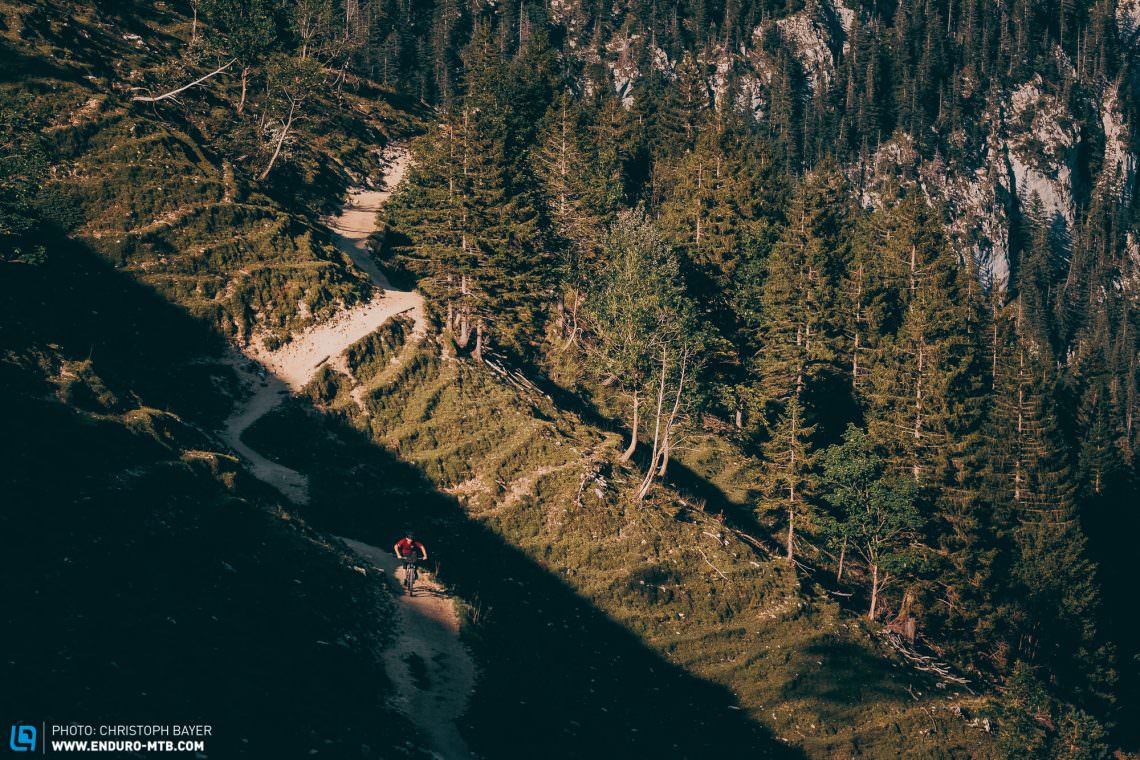
After a lot of research and the sobering realisation that the market for production titanium frames with modern but not exaggerated geometry is extremely niche, I came across the Nordest Britango. The bike wasn’t in production at the time, but one look at the geometry table confirmed that this had to be the right frame. Luckily, I was able to get my hands on a pre-production model.
The Nordest Britango Ti
My key criteria were a frame with 29″ wheels, around 460 mm reach, a reasonably slack head angle, relatively steep seat tube angle, a spacious front triangle and compatibility with a 130 mm travel fork. The Nordest Britango ticks all of these boxes. Not only that but it features short chainstays for crisp handling, plenty of mounting points for bottle cages and the option to fit plus-sized 27.5″ tires. And at € 1,399 the Britango is quite affordable for a titanium frame. Nordest now also offer their customers the choice of a 27.2 mm seat tube for regular seat posts or a 31.6 mm seat tube with stealth dropper post routing. As a prototype model, my frame has the former, but this doesn’t mean I had to make do without a dropper post.

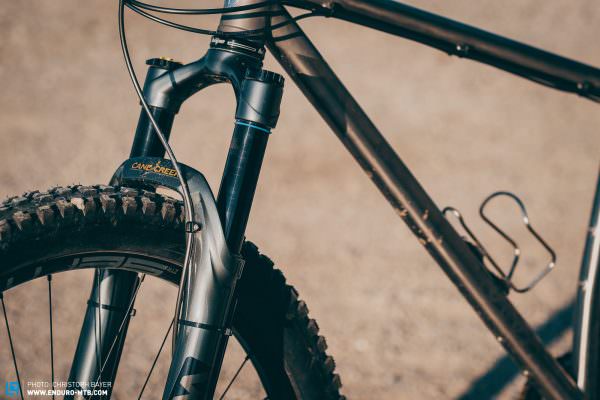
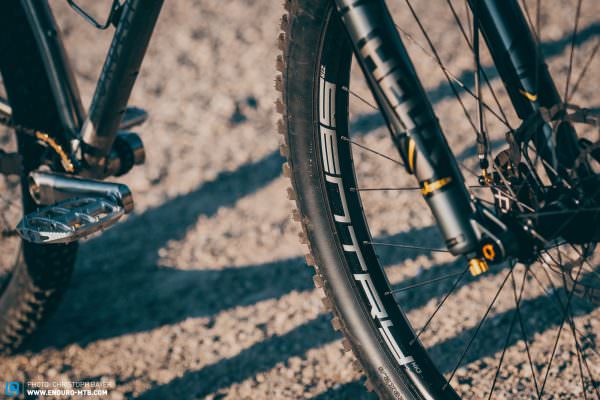
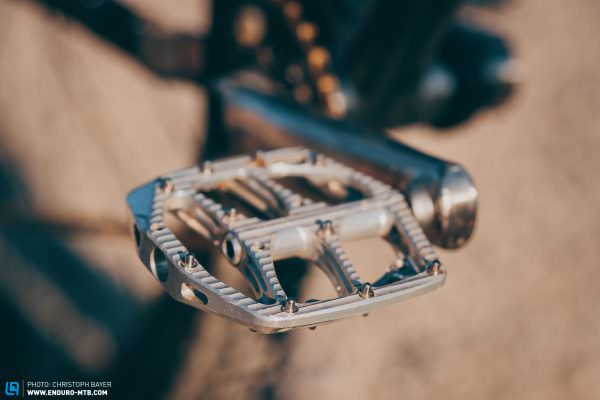


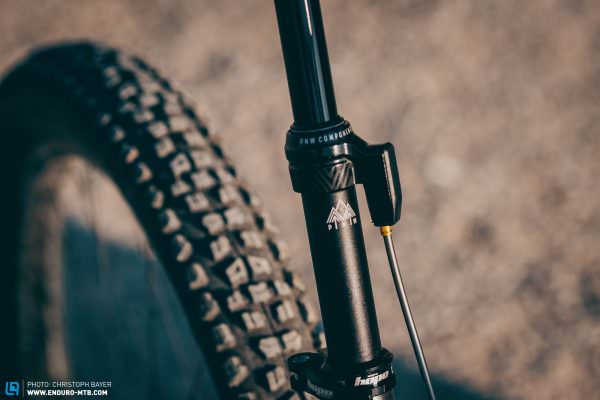
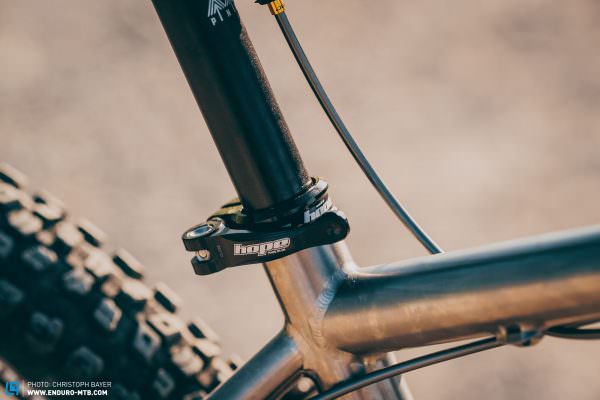
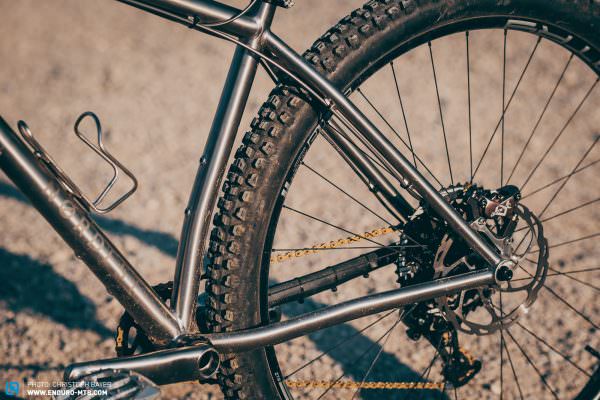
The build
A central idea behind this bike was not to use carbon fibre. Robustness was not the decisive factor here, but rather the reduced ecological impact. Although titanium, aluminium and steel aren’t much less resource-intensive to produce, they are, in stark contrast to carbon composites, economically recyclable at the end of their life. Titanium is also very resistant to corrosion and fatigue, giving it a very long lifespan and the longer you’re able to use something, the more ecological it becomes. Besides, it was a welcome challenge – for example, a SRAM X01 Eagle groupset wouldn’t have been an option.
Frame Nordest Britango Ti, Size ML
Fork Cane Creek Helm Coil 29, auf 30 mm
Brakes Hayes Dominion A4 200/180 mm
Drivetrain SRAM GX, E*thirteen 12 Speed Upgrade-Kit, Wolf Tooth 28t-Chainring, Cane Creek eeWings cranks, SRAM XX1 Eagle chain
Seatpost PNW Pine 27.2 mit Loam Lever 110 mm
Saddle/Grips Ergon SM Pro Men, Ergon GA3
Stem Renthal Duo 50 mm
Handlebar Thomson Ti Riser Bar, 800 mm
Wheels Stan’s NoTubes Sentry Mk3, silberne Decals
Tires MAXXIS Minion DHF 2.6 MaxxTerra EXO / MAXXIS Aggressor 2.5WT EXO
Accessories/Bags Wolf Tooth Components, Jagwire, Bedrock Bags
The drivetrain – compact, lightweight and 511% gear range
While a Rohloff or a Pinion drivetrain are ideal for bikepacking, they make less sense on a dual-purpose build since you won’t be taking the bike on super long expeditions and it would suffer from the extra weight for trail riding. With the help of E*Thirteen’s TRS Plus 12-speed upgrade kit, I was able to update the 11-speed SRAM drivetrain. The kit comes with a two-piece 9-46 t cassette made of steel and aluminium as well as various small parts to convert the shifter and derailleur to a 12-speed system. This has several advantages: the cassette offers a slightly bigger gear range, weighs less and allows the use of smaller chainrings. Together with the shorter non-Eagle derailleur, you get a very compact drivetrain with better ground clearance. An oval Wolf Tooth Components chainring takes the pressure off your knees on long rides and is mounted to the best-suited crankset for this project – a titanium Cane Creek eeWings. Although outrageously expensive, they’re sexy as hell and weigh the same as SRAM’s X01 Eagle carbon model.


Fork, brakes and wheels
The Helm Coil 29 fork is made by Cane Creek as well. I intentionally chose the coil version so that I don’t need to carry a shock pump and if anything malfunctions I should be able to carry on riding. It’s also very easy to adjust its travel and so gives me all the options I was looking for.
The Hayes Dominion A4 brakes were also an easy choice to make. The super-light lever action, reliable performance and small technical details such as the adjustment screws for the callipers immediately convinced me – I simply had to have them.
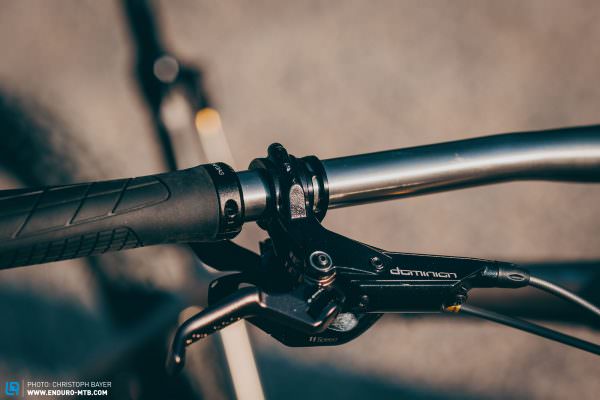

For the wheelset, I quickly honed in on a set of Stan’s NoTubes Sentry Mk3. The wheels offer a good mix of reliability, a wide 32 mm rim width and reasonable weight. With 32 spokes front and rear, if I happen to break a spoke it means the wheel won’t immediately collapse under the weight of my bags. The tire choice was just as straightforward. In principle, I wanted tires as wide as the frame and fork would allow, with minimal rolling resistance and good durability, as well as a reasonable amount of grip. Up front I went for a 2.6″ MAXXIS Minion DHF II in the MaxxTerra compound for the best grip and acceptable rolling resistance. I paired it with a 2.5″ Aggressor in DualCompound on the rear for low rolling resistance and increased durability while still offering a rugged and versatile tread pattern. Since bikepacking isn’t quite as demanding and both my riding style and body weight are rather light, the standard EXO casing does the job for both tires.
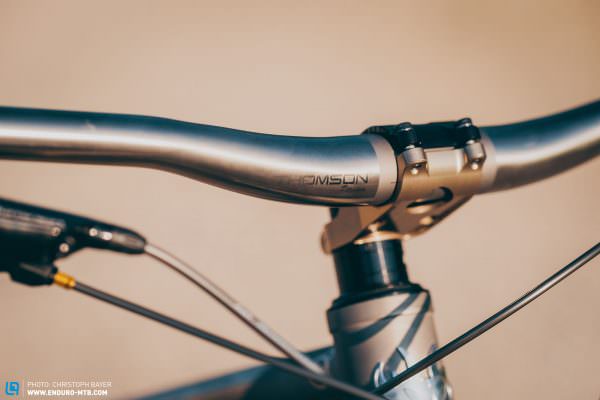
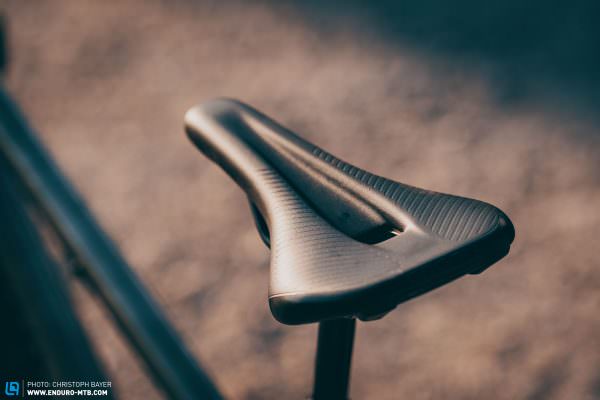
Cockpit, contact points and dropper post
The 800 mm wide Thomson Ti Riser handlebar certainly steals the show. Admittedly just as unreasonable as the titanium cranks when considering the astronomical price, the handlebar skilfully combines damping and rigidity. The Renthal Duo stem was mainly an aesthetic choice but it has the advantage that there are no screws at the bottom of the clamp to rub against the handlebar bag. I didn’t have to think long choosing the Ergon saddle and grips. The GA3 grips offer a winning combination of long-distance comfort and control, and the SM Pro Men keeps its marketing promise, making it pretty much the most comfortable saddle I’ve ever ridden on.
Normally I would have gone for a purely mechanical dropper post, such as E*Thirteen’s TRS+. However, since the prototype Britango was only available with a 27.2 mm seat tube and no stealth routing, I chose the PNW Pine. Together with the Loam Lever, it’s the smoothest option in the tiny market of skinny dropper posts. The short 110 mm travel has the advantage that you don’t have to fit a limiter to protect the saddlebag – with the dropper completely lowered, the saddle pack still has enough tire clearance. The cable is routed externally, so swapping it our for a rigid seat post is super easy if I ever feel the need to attach luggage with more volume. Since I received my prototype Nordest have made the production frame available with a 31.6 mm seat tube for those who prefer stealth dropper routing.
My first choice for the bottom bracket, headset and pedals are components from Hope. They look good, are super robust and durable, easy to service and have never let me down – reason enough to use them here as well. Speaking of pedals, my third unreasonable upgrade was the titanium pins on the F20 pedals …
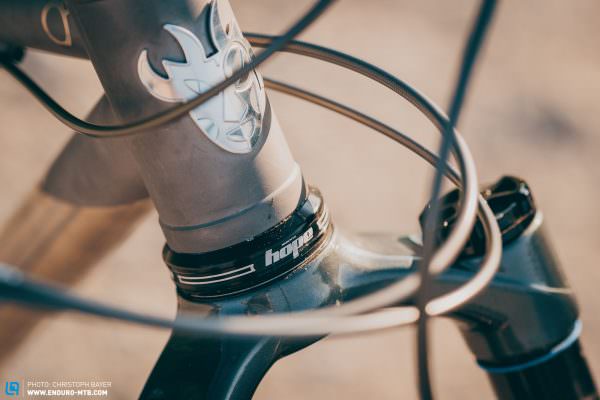


Luggage, accessories and optics
The variety of bikepacking bags is huge. Most, however, are designed for maximum capacity and pure touring. Since my bike had to be trail-capable even when fully loaded, I eventually settled for Bedrock Bags from Colorado. The Black Dragon Dropper Seat Bag has a clever attachment system that effectively stops the bag from swinging around. Classic handlebar bags need a rather long stem to work well – not so with the Moab Handlebar Bag. Specifically designed for modern MTB cockpits, it bends around the head tube, positioning itself centrally under the handlebar even with a short stem, thereby making room for the brake levers and also shifting the centre of gravity more towards the middle of the bike. The frame bag is custom made and securely attaches to the frame via the bottle cage bosses for a clean look. Since the bags don’t have the biggest carrying capacity, I added various smaller bags from Bedrock Bags’ range.

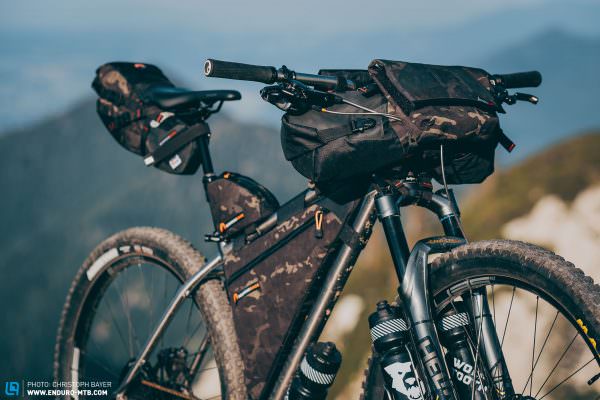


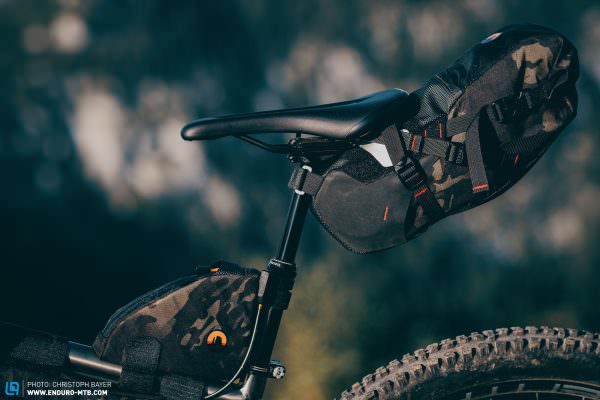
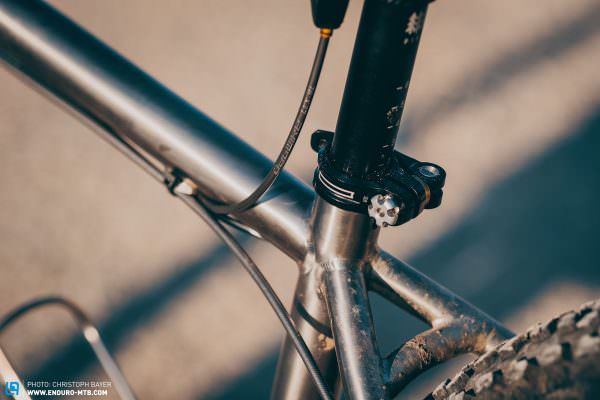
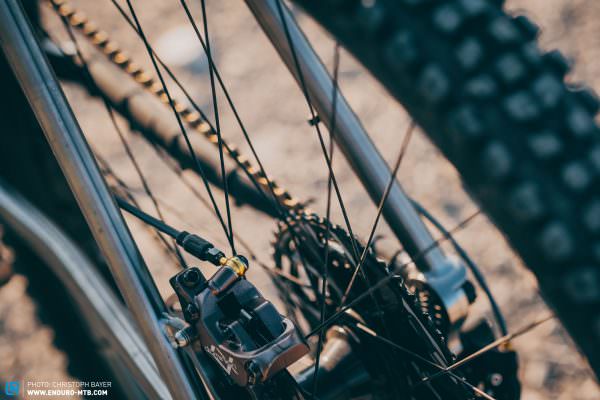
Since the space in the front triangle is taken up by the frame bag, you’ll undoubtedly be asking yourself where the water bottles are supposed to go. There’s space for one on the underside of the down tube, but that isn’t enough for long distances. The Wolf Tooth B-RAD expansion system is designed to be used in combination with standard bottle cage bosses, but it also works great for attaching bottle cages to your fork. When not in use, you can remove the bottle cages and leave the rails in place. The beautiful stainless steel bottle cages are made for Wolf Tooth by King Cage.
Bringing everything together visually, I swapped out the stock cables (brakes, gear, dropper) and connectors to Ice Gray and Gold Jagwire models. I also replaced the white stickers of the Stan’s NoTubes Sentry Mk3 wheels with silver ones. Coming in at 12.64 kg (without bags) the bike is no lightweight. I could easily have shaved off 600 g just by going with an air fork and a carbon handlebar, but robustness and peace of mind were significantly more important to me than weight savings.

Onboard – how does the Nordest Britango Ti ride?
The riding position on the Nordest Britango Ti is fantastic. Thanks to the 637 mm top tube and the 74° seat tube in size M/L, the riding position is nice and central, allowing you to keep cranking even after several hours on the super comfortable Ergon SM Pro Men saddle. The only drawback: the 420 mm chainstays are extremely short for a 29er and I would have liked them to be 5 mm longer for more directional stability and tire clearance. With the 130 mm fork, the front end remains in control up steep climbs and you could happily go up to 140 mm when loaded.
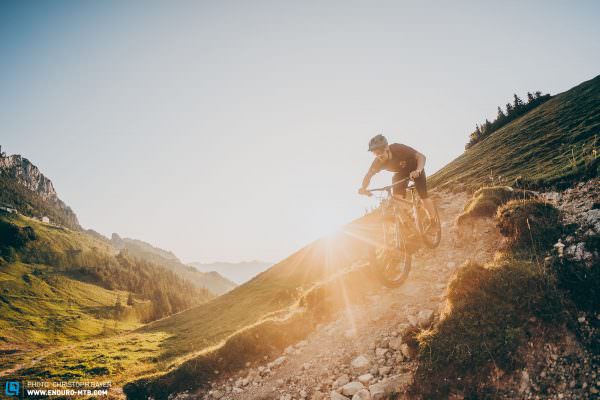
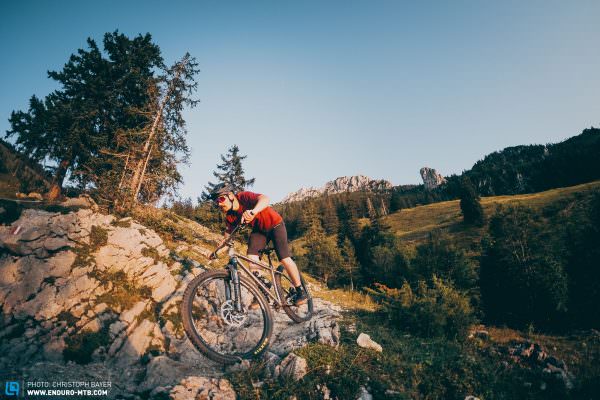

Since the additional weight in full-on bikepacking mode only comes to about 10 kg, you can leave the standard coil (72-90 kg) in the fork. However, the preload has to be increased by about six clicks and the high- and low-speed compression damping by two clicks. The rebound setting can remain as is – the front-heavy load compensates for the increased preload.
The front triangle is not the most torsionally stiff due to the slim titanium tubes and the short head tube. Fully loaded for unsupported expeditions (tent, sleeping bag, clothes, cooker, tools, 2.25 litres of water and food for 2 days) the Nordest weighs a whopping 23 kg and that flex is more noticeable. That’s to be expected and acceptable given that you won’t be riding as hard with the bags attached anyway and the frame wasn’t designed for with this in mind. Nitpicking, I feel that increasing the diameter (and stiffness) of the down and top tubes by a few millimetres wouldn’t be unwarranted. Unloaded, the effect is significantly less pronounced and barely noticeable.
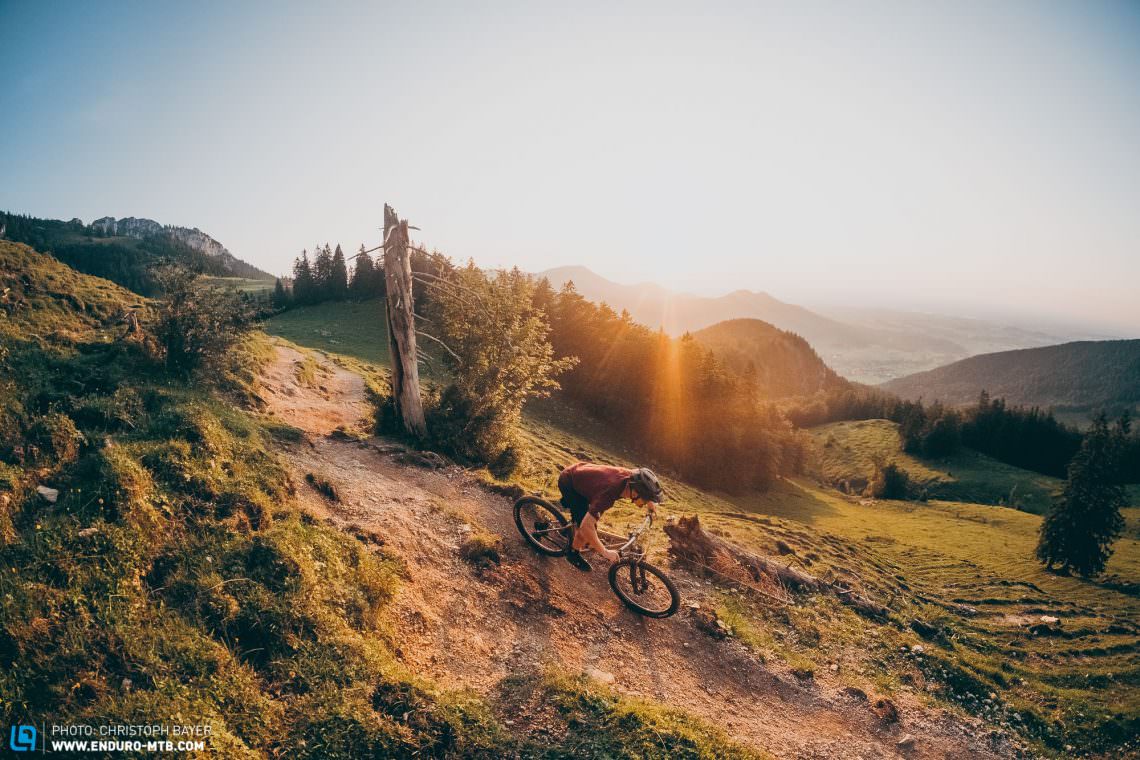
The downhill handling is easy and playful, and in combination with the 800 mm wide handlebar, it gives you a feeling of control and confidence. This is not a bike to be underestimated when you head off the beaten track. It handles narrow, technical alpine trails just as confidently as steep, rough, full-speed descents. The plush Helm coil fork reliably keeps the bike on track and together with the super-light lever action of the powerful Hayes Dominion A4 brakes, your hands don’t cramp up on long descents. It’s perhaps unnecesarry to say given my careful selection, but all the components delivered in terms of performance and comfort. There isn’t a single component that I would change. The Nordest comes into its own when riding unloaded on flowing, narrow forest trails. Here it’s able to play to the strengths of its short and stiff rear end, weaving nimbly between the trees.
Conclusion
Game, set and match. The Nordest Britango masters the balancing act between fun trail hardtail and bikepacking machine and the carefully selected components effectively toe the line between the two for this dual-purpose machine. The bike is super comfortable riding long distances and great fun on flow trails. Although the componentry, geometry and the handling tick all the boxes I was looking for, there are two things I’d like to see improved on the frame. With slightly longer chainstays for a little more directional stability and composure, along with larger diameter tubing for more torsional stiffness when loaded, it would be my dream of an all-round bike come true.
Tops
- perfect all-round geometry
- great ride comfort
- easy and agile handling
- trail-capable Bedrock Bags system
- no carbon fibre parts
Flops
- extremely short chainstays
- flex when fully loaded
For more info head to nordestcycles.com. The other Editors’ Choice-Bikes can be found here.
This article is from ENDURO issue #040
ENDURO Mountainbike Magazine is published in a digital app format in both English and German. Download the app for iOS or Android to read all articles on your tablet or smartphone. 100% free!


Did you enjoy this article? If so, we would be stoked if you decide to support us with a monthly contribution. By becoming a supporter of ENDURO, you will help secure a sustainable future for high-quality mountain bike journalism. Click here to learn more.
Words: Photos: Christoph Bayer











